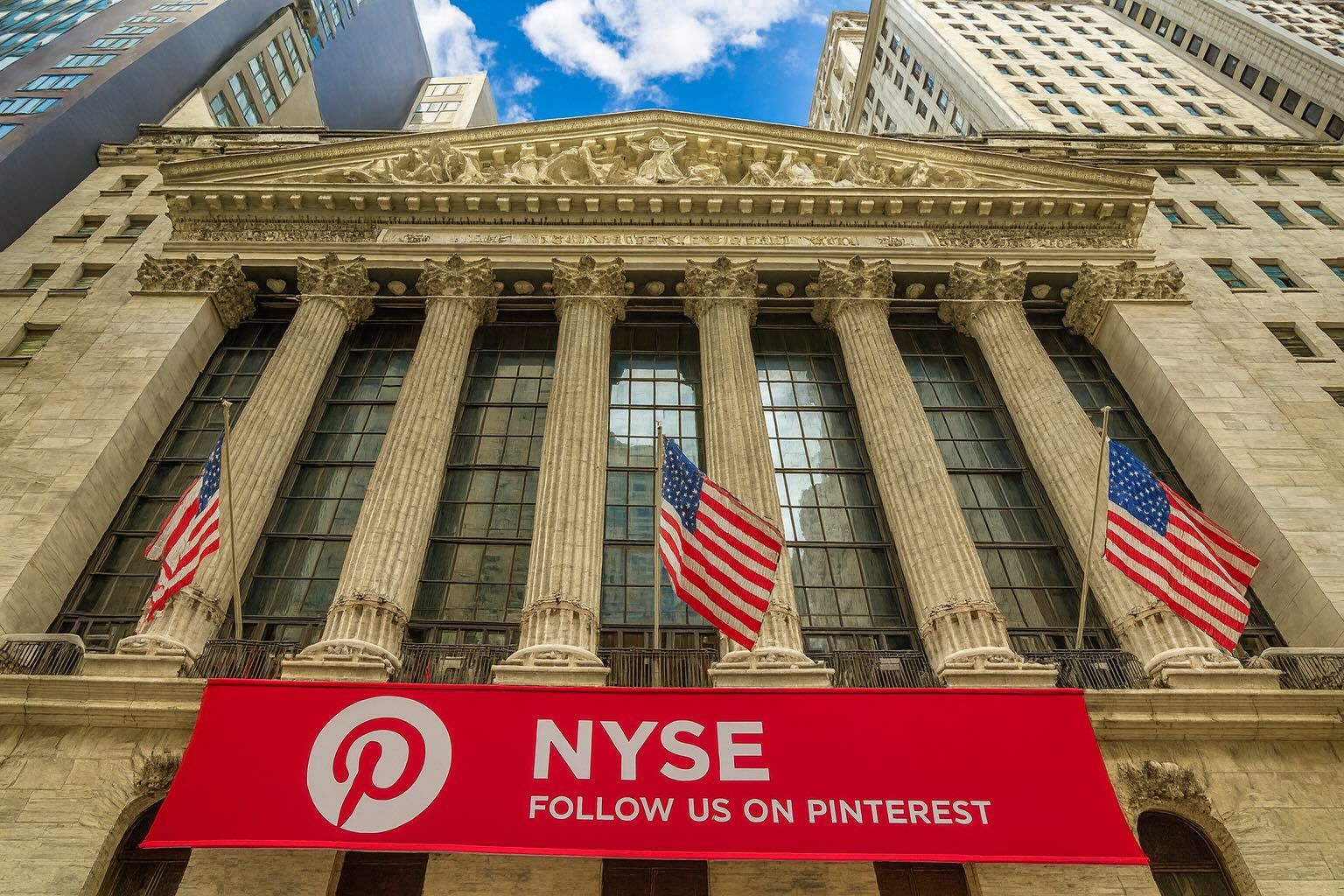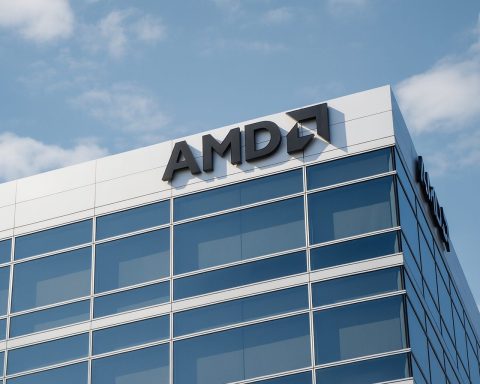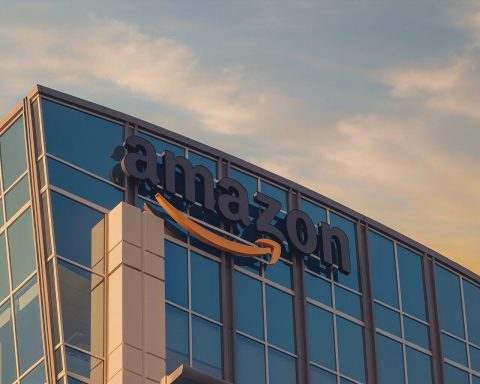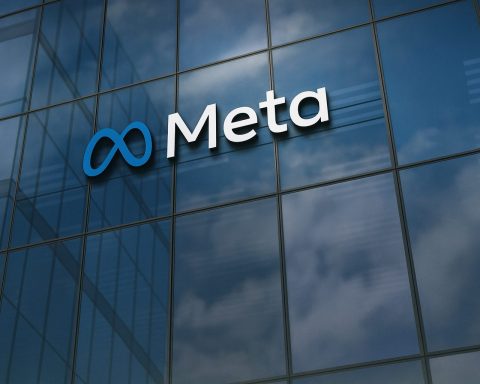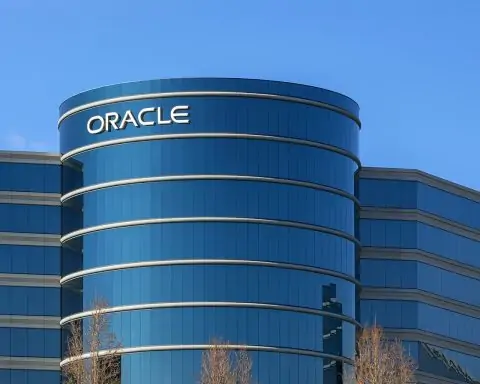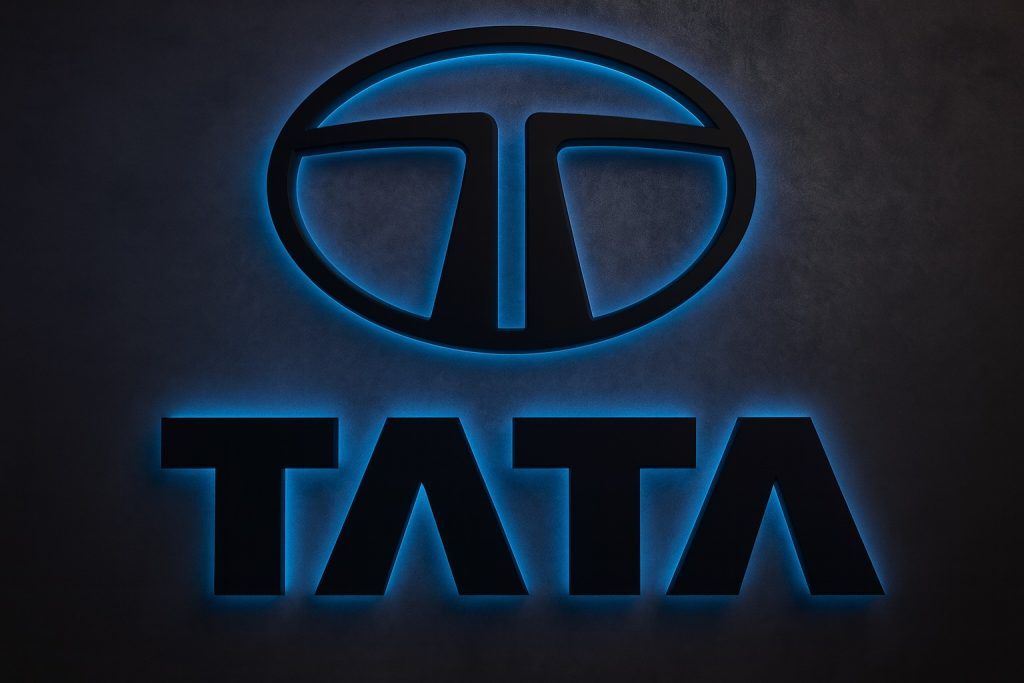- Stock Price & Market Cap: As of Oct. 13, 2025, Pinterest (NYSE: PINS) closed at $32.27 [1] [2], near the middle of its 52‑week range ($23.68–40.90) [3]. Market capitalization is roughly $21.9 billion [4]. Year‑to‑date (2025) PINS is up only modestly (~+4–5% [5]), underperforming the broader tech rally.
- Valuation: Pinterest trades at a low multiple: P/E is about 11–12× trailing earnings [6] (far below peers), with a forward P/E around 18× [7]. Its PEG ratio is roughly 0.5–0.6 [8], implying analysts expect strong growth relative to price. GuruFocus notes Pinterest has virtually no debt (EV ~$19.2B vs. market cap $21.9B [9]), meaning about $2.5B net cash on hand.
- Revenue & Earnings (Q2’25): In August 2025 Pinterest reported Q2 revenue of $998.2M (+17% year-over-year) [10], beating forecasts. Adjusted EBITDA rose 33% (margin ~25%) [11], and non-GAAP net income was $197M [12] (GAAP: $30M loss). CEO Bill Ready called it a strong quarter, noting “Gen Z has grown to over half of our user base” [13]. For Q3, management guided revenue $1.033–1.053B (15–17% YoY growth) [14] – roughly in line with consensus. Analysts expect full-year 2025 revenue ~$4.2B (≈15–17% growth) [15], and EPS ~$1.72.
- User Base & Demographics: Pinterest boasts about 578 million monthly active users (Q2 2025) [16]. Notably, Gen Z now comprises over 50% of its users [17] (CEO Ready’s words) and ~⅔ of users are women [18]. In Q2 the user count was up 11% YoY, though additions have slowed (8M net adds vs. 17M in Q1) [19]. The platform’s highly engaged, shoppable audience is a key asset: market research finds 39% of Gen Z shoppers now begin their online searches on Pinterest, and new ad formats (e.g. “Top-of-Search” ads) have demonstrated higher click-through rates than older formats [20].
- Analyst Outlook: Wall Street sentiment is broadly bullish. Analyst consensus target is about $43.6 (12‑month) [21] [22] – roughly 35–40% above today’s level. High targets include $50–$51 (UBS, Mizuho) [23]. Of 41 analysts, 34 rate PINS a Buy (vs. 6 Hold, 1 Sell) [24] [25], and the average rating is “Strong Buy.” Recent upgrades (Mizuho Outperform $50, Wedbush $44, JPMorgan Overweight $40, etc. [26]) reflect confidence in Pinterest’s strategy. MarketBeat and Investing.com data similarly note ~35% upside potential [27] [28].
- Recent Volatility: Trading has been choppy. PINS spiked to the high-$30s in September (near 52w high) but then fell over early Oct. In the week Oct. 6–10 it declined ~5% [29] amid a broad tech pullback. On Oct. 10, the NASDAQ fell ~3.5%, and PINS dropped ~4.6% [30]. Renewed trade-tension headlines (President Trump threatened new China tariffs) on Oct. 10–11 led PINS to fall ~4% intraday [31]. By contrast, Oct. 13 saw a strong market rebound and PINS closed at $32.27 (a ~6% gain) [32]. Notably, short interest is low (~4.4% of float) [33], suggesting few investors are betting on a sustained drop.
Stock Price & Market Performance
Pinterest stock has traded in a wide range this year. After climbing into the high-$30s in late summer (around its 52‑week high of ~$40.90 [34]), PINS pulled back in October. From Oct. 6–10 it slid from ~$32.05 to $30.40 [35], roughly tracking the Nasdaq’s sell-off. On Oct. 10 the tech-heavy Nasdaq fell nearly 3.5% [36], and PINS was not spared (–4.6% that day [37]). Trade-war fears intensified when President Trump on Oct. 10 warned of “massive” new tariffs on China; tech and retail stocks tumbled, including Pinterest (which fell ~4.1% in one afternoon session) [38].
The market reversed course Oct. 13 after calming tweets out of Washington and a strong U.S. jobs report. The S&P rose ~1.6% and Nasdaq +2.2% that Monday, its best day since May. Pinterest rode the rebound – closing $32.27 on Oct. 13 (up 6.15% that day) [39]. Overall, PINS is roughly flat for 2025 (~+4–5%) [40], far behind megacap tech, but some analysts see this weakness as a buying opportunity given its fundamentals.
Trading metrics are notable: volumes have been elevated in volatile sessions, and average daily volume (about 10–11M shares recently) is double last year’s norm. Short interest is relatively low (~29.7M shares, 4.4% of float [41]), indicating limited bearish pressure. Technically, PINS sits around its 20–50-day averages ($33–$34) [42]. TipRanks notes several sell signals on moving averages, so the near-term trend is cautious. However, many analysts believe a dip below ~$30 would be a buying opportunity, and the consensus target (~$43–44) implies substantial upside [43] [44].
Recent News & Developments
Earnings & Guidance: Pinterest’s latest financial update came with its Q2’25 results on Aug 8. Management beat revenue forecasts ($998M vs. est. $974M [45]) and delivered record MAUs (578M [46]). Adjusted profit ($0.33 per share) fell slightly short of consensus ($0.35) [47], which prompted an 11% drop in after-hours trading on the report date. CEO Bill Ready remained upbeat – “Gen Z has grown to over half of our user base” [48] – and CFO Julia Donnelly noted strong international advertising trends (Europe ARPU +26%, Rest-of-World +44% [49]). For Q3, Pinterest guided $1.033–1.053B (15–17% growth) [50], roughly matching analysts’ ~16% estimate.
Product & Partnerships: In late September, Pinterest held its annual “Pinterest Presents” summit. New ad formats were unveiled to target shopping-focused users. Notably, Pinterest launched a “Top of Search” visual ads beta and expanded its Local Inventory Ads (driving in-store visits) [51]. It also introduced “Pinterest Media Network Connect” – a tool for retailers (e.g. Kroger, Instacart) to integrate their ad buying with Pinterest’s platform [52]. These moves signal Pinterest’s strategy to harness its visual search tech and AI to boost e-commerce: early tests show these ad types yield much higher CTRs (e.g. +29% vs. standard campaigns [53]). The company is also rolling out controls around AI-generated images in the feed, responding to user and regulatory concerns [54].
Executive Changes: Pinterest has reshuffled its leadership for an AI-shopping push. In mid-September 2025, Emily Reuter (then-Instacart CFO) was elected to Pinterest’s board [55], bringing retail/commerce expertise. Meanwhile, CEO Bill Ready joined Visa’s board on Sept 29 [56], underscoring his fintech background and ties to merchant networks. These hires align with Pinterest’s narrative of becoming an “AI-enabled shopping assistant.” Conversely, longtime board member Jeremy Levine retired in Sept [57].
Broader Tech Context: No major Pinterest-specific announcements were made on Oct. 14 itself, but macro news is still moving the stock. Last week’s U.S. shutdown and trade-war headlines have kept markets jittery. For example, tech peers Meta and Reddit surprised on the upside in early October, while Snap reported its slowest revenue growth in over a year [58]. When Trump’s tariff warning hit, Pinterest joined a sell-off alongside Etsy, Lyft, Yelp, and other retail/tech names [59] [60]. By contrast, easing trade fears and a rebound in global markets on Oct. 13 helped lift tech stocks and PINS. Going forward, investors will watch if upcoming economic data or AI-related news provide fresh catalysts (e.g. a continued rally in ‘Magnificent 7’ tech stocks could spill over to ad-driven names like Pinterest).
Financial Fundamentals
Pinterest’s financial footing is relatively strong. Revenue growth has accelerated to the mid-teens: 17% in Q2’25 [61], and roughly 15–17% YTD [62]. This compares favorably with 2024 (when annual growth was ~9%). Much of this growth is international: CFO Donnelly highlighted accelerating ad spend from Europe and Asia. Profitability has turned positive. After years of losses, Q2’25 non-GAAP net income was $197M [63], and operating margins (EBITDA ~25% in Q2 [64]) are improving. Pinterest still invests heavily in R&D and marketing (AI features, “do it yourself” commerce tools), but it’s now throwing off healthy cash flows. As of Q2’25, net cash on the balance sheet was roughly $2.7B [65], giving the company financial flexibility.
Valuation metrics are attractive. At ~$32, P/E (TTM) is only ~11–12× [66], near the bottom of its historical range. For context, the U.S. internet sector averages ~30× [67]. On a price-to-sales basis, Pinterest trades near 5–6× sales [68], also below many peers. In short, the stock’s cheap multiples reflect the market’s caution about ad budgets and user-saturation. Research site Simply Wall St notes P/E is ~11.2× vs. an estimated “fair” ~16.9× [69], implying undervaluation by that metric. Reassuringly, Pinterest carries virtually no debt (other than modest operating leases) [70]. Enterprise value is about $19.2B vs. market cap $21.9B [71], meaning the company has ~$2.7B more cash than debt, a rare net-cash position among tech firms.
On valuation, analysts see room to run. The forward-looking PEG ratio (~0.5) suggests PINS is priced for slower growth than expected, a gap that might narrow if execution is strong [72]. Bloomberg Intelligence and others have pointed out that with double-digit growth (15–20%+), a higher valuation could be justified. One Wall Street report estimated intrinsic value using discounted cash flow near $72–73 per share [73] – far above current price – although such models assume the highest-case scenario. However, the consensus target (~$43) already implies ~35–40% upside in the next 12 months [74] [75]. With next earnings due (Q3 results expected Nov. 7, 2025 [76]) and potentially strong holiday ad spending ahead, investors will re-focus on fundamentals soon.
Analyst Forecasts & Recommendations
Wall Street’s narrative on Pinterest is largely positive. Over the last month several firms either initiated or upgraded their ratings, in line with the company’s solid guidance. For example, on Sept. 30 Mizuho started coverage with Outperform ($50 target) [77]. UBS reiterated Buy on Oct. 9, raising its target to $51 [78]. Other recent targets include Citi at $50, Wedbush at $44 (from $42), Stifel at $47 [79]. Only a few analysts are cautious: about 1 Sell, 6 Hold, and 34 Buy recommendations are on record [80] [81] (Investing.com calls it a “Strong Buy”). The mean 12-month price forecast sits around $43.58 [82] [83]. Even after its September peak, this consensus target is ~36% above current price.
Analysts cite several bullish arguments. Many highlight Pinterest’s AI investments (its “Performance+” automated ad bidding, image search, and shopping tools) and viral Gen Z adoption as upside drivers. eMarketer has praised its ability to exceed guidance and broaden advertiser adoption. Bernstein Research has noted Pinterest as a “Gen Z winner” given its youth-skewed user base and mobile-first shopping features. Some emphasize international growth and improved ad economics: Q2 saw Europe ARPU +26% [84], suggesting room to monetize outside the U.S.
However, experts also voice caution. eMarketer analyst Jeremy Goldman warned that in a “high-expectation environment, even a small gap” in results can trigger selloffs [85]. This reflects the market’s sensitivity: PINS spiked on growth news in September but then fell on results that, while good, weren’t stellar. Credit Suisse recently pointed out that Pinterest’s P/E (11×) is low partly because investors worry about advertising cyclicality and slower user growth ahead [86]. Lenny Zephirin of Zephirin Group noted, “MAUs are approaching a ceiling level of maturity” [87], implying that Pinterest must continually innovate to sustain engagement. The consensus view is that 2025 revenue will grow ~15–17% to ~$4.22B [88] and Q3 sales ~$1.05B (+16.6%), with EPS around $0.42 [89]. If Pinterest hits or exceeds these figures, analysts believe the current targets will prove conservative.
Competitive Landscape (Meta, Snap, TikTok, etc.)
Pinterest operates in the crowded social/digital ad ecosystem. Its largest rival is Meta Platforms (NASDAQ:META), whose ad revenue (~$35B+ per quarter) is many multiples of Pinterest’s. Meta serves all demographics and has vast scale with Facebook and Instagram. By contrast, Pinterest’s niche is visual discovery and intent-driven shopping; its user base is smaller but highly engaged in areas like home décor, fashion and recipes. Meta’s recent results have been robust, but concerns about user privacy and saturation mirror the challenges Pinterest faces (global user growth slowing, and international markets generating lower ad prices [90]).
Snap Inc. (Snapchat) is a nearer peer in user demo and growth stage. Snap also targets young, mobile audiences. Q2’25 results: Snap posted $1.30B revenue (+9% YoY) [91], its slowest pace in a year [92]. Snap’s core U.S. audience has plateaued, forcing it to chase global expansion (similar to Pinterest). Both companies are heavily reliant on U.S. advertisers (where growth has been tepid), making them sensitive to U.S. budget cuts. (Snap’s stock has languished near multi-year lows.) In short, Pinterest and Snap share headwinds: they must convert niche user engagement into broader ad growth as giants like Meta and TikTok soak up the rest.
TikTok (ByteDance) looms as a fast-growing, if private, competitor. While exact numbers are secret, TikTok’s U.S. user count likely surpasses 150M and globally it’s over 1B monthly users. Its advertising platform is still maturing, but demand is enormous – especially among Gen Z. In recent weeks speculation about a U.S. sale of TikTok (reports of a ~$14B valuation) has grabbed headlines [93]. Analysts say this has put a spotlight on Pinterest: some investors wonder how high Pinterest could be valued if TikTok gains unrestricted access to U.S. ads or if regulatory changes shift market dynamics. Surveys of marketers often group TikTok, Instagram, and Pinterest as the top social channels for driving e-commerce sales [94]. Each has its angle – TikTok for viral products and entertainment, Instagram for branded commerce, and Pinterest for intent-driven shopping – but they are increasingly vying for the same advertising dollars.
Other competitors include Google (Search and YouTube) and Amazon. Google’s shopping ads and Amazon’s social-ish shopping tools are indirect rivals. However, Pinterest’s visual search edge and its highly female user skew give it a differentiated “addressable audience” in some categories (DIY, fashion, home, etc. [95]). Analysts caution that if macro ad budgets tighten (as happened with the duty-free rule impacting smaller platforms [96]), Pinterest’s growth could slip just like Snap’s did.
User Engagement & Monetization Trends
Pinterest’s business hinges on user engagement translating into ad sales and commerce. Its half-billion users are notably active: about one in three monthly users in the U.S. engage with shopping features. The platform’s AI-driven “home feed” and Lens visual search keep people discovering ideas. CEO Ready emphasized that Pinterest is now positioning itself as an “AI-enabled shopping assistant,” blending inspiration with direct purchase tools [97].
On the monetization side, advertisers have a variety of formats. In addition to traditional Promoted Pins, Pinterest is rolling out sophisticated AI-driven ad tools. Its Performance+ platform automates ad creation and bidding; Ready noted it “cuts campaign creation time in half” [98], making the network more accessible to marketers. The recent “Top-of-Search” ads allow brands to appear when users explicitly search for products – a new high-intent placement. Early tests of Top-of-Search reportedly boosted click-through rates by ~29% over standard ads [99]. Local Inventory Ads and the Media Network Connect feature further integrate brick-and-mortar retailers (e.g. Instacart, Kroger) into Pinterest’s ecosystem, aiming to drive store traffic and measurable sales.
These developments are timely: advertisers increasingly value Pinterest’s audience. A recent industry survey found 39% of Gen Z teens begin their shopping journey on Pinterest [100], even higher than those who say TikTok or Snapchat (in that poll). Brands targeting women in home, DIY, wellness, and lifestyle categories especially find Pinterest attractive. By interweaving affiliate links and in-app “Checkout”, Pinterest not only shows products but increasingly lets users buy without leaving the app. This tight integration of ads and e-commerce is a key monetization trend.
However, ad monetization is still subject to wider forces. As Reuters reported, changes in U.S. trade policy prompted some Asian e-commerce firms to pull ad spend from U.S. platforms, causing a ~25% drop in international ad pricing for Pinterest [101]. Management noted that while U.S. ad prices fell, some spending shifted to Europe and emerging markets. So far, Pinterest has weathered these shocks, but sustained macro headwinds (recession fears, tightening budgets) could dampen its ARPU (Average Revenue Per User). Thus far, improving international uptake (EMEA/Asia) is mitigating U.S. pressures, but this remains a key trend to watch through late 2025.
Executive & Analyst Commentary
Executives and analysts are vocal about Pinterest’s trajectory. CEO Bill Ready has repeatedly highlighted Pinterest’s pivot to AI and commerce. In remarks around Q2 results, he stated: “Gen Z has grown to over half of our user base” [102], underscoring how the platform’s younger audience now dominates. He also touted new ad products: “[Performance+] adoption… was accelerating, cutting campaign creation time in half” [103], reflecting the efficiency gains promised by Pinterest’s tech. Such comments are aimed at convincing investors that Pinterest is not just a hobbyist site but a robust commerce engine.
Analysts have added color. eMarketer’s Jeremy Goldman praised the execution but cautioned: “even a small gap between reality and euphoria can trigger a sell-the-news reaction.” [104] This came after Pinterest’s Q2 beat – the stock popped then fell – a classic “sell the news” scenario. Lenny Zephirin (Zephirin Group) issued a warning: “MAUs are approaching a ceiling… despite the incremental implementation of AI” [105]. In other words, user growth may be hitting natural limits, so retention and monetization per user are crucial. Barron’s and fintech analysts have similarly commented that Pinterest’s expansion of shopping and AI tools could be catalysts – but they stress execution must remain sharp. Notably, many are watching the upcoming holiday shopping season as a test of Pinterest’s shopping-ad strategy.
On the broader narrative, some believe Pinterest is undervalued. Simply Wall St. gave it a perfect 6/6 valuation scorecard, arguing the stock trades at a steep discount to intrinsic value [106]. They highlight steady cash flow (>$1B FCF run rate) and the fact that a conservative DCF still values the stock near $73 [107]. While such figures should be taken with caution, they illustrate the bullish sentiment that Pinterest’s core business could justify a much higher stock price if growth continues or if market sentiment improves.
Investor Sentiment & Outlook
Investor sentiment on PINS is a mix of optimism and caution. The recent flurry of analyst upgrades and insider moves is encouraging: for example, Janney Montgomery Scott reportedly boosted its stake in Pinterest during Q2 [108], signaling confidence. Many institutional and hedge fund investors view Pinterest as a sleeper pick in social media. Insider ownership is modest, but management’s large share (Bill Ready was an ex-Googler and owns stock) aligns their incentives with shareholders.
On the other hand, traders remain wary of macro risks. The VIX “fear index” spiked to ~21.7 on Oct. 10 [109] amid global uncertainties, and growth stocks sold off broadly. As a result, Pinterest’s stock has shown higher volatility than the market lately. Technically, short-term momentum is mixed: TipRanks data cited by TS2 notes most moving averages are giving Sell signals [110]. However, momentum indicators (RSI ~32) are not deeply oversold, suggesting any bounce could be limited without fundamental improvements [111].
Key support for PINS stands near the $30 level (the late Sept–Oct floor). A drop below ~$30 could open risk of testing the 52-week low near $23.68 [112]. Conversely, a sustained move above ~$34–$35 could reignite the uptrend. In this light, many investors consider current levels a buy-the-dip opportunity, betting on continued double-digit growth. As one TS2 analyst puts it, the stock’s low valuation (PEG ~0.5) “suggests the market currently underestimates [Pinterest’s] projected growth” [113].
In summary, Pinterest remains a high-profile tech name with a blend of promise and risk. Its recent user and revenue gains, plus aggressive AI/shopping strategies, are drawing plaudits. Yet it sits in a challenging ad environment and faces fierce rivals. With shares near $32 and a consensus target near $44–$51 [114] [115], the question is whether upcoming earnings (Nov 7) and the holiday season will vindicate the bulls’ optimism or renew the bears’ caution.
Sources: Latest Pinterest investor releases and TS2.Tech analysis (covering events through Oct 13, 2025) [116] [117], Reuters news reports [118] [119], and market data from Investing.com and GuruFocus [120] [121]. These show the fundamentals, quotes and market metrics cited above.
References
1. www.gurufocus.com, 2. ts2.tech, 3. ts2.tech, 4. www.gurufocus.com, 5. ts2.tech, 6. ts2.tech, 7. ts2.tech, 8. ts2.tech, 9. ts2.tech, 10. www.reuters.com, 11. www.reuters.com, 12. ts2.tech, 13. ts2.tech, 14. ts2.tech, 15. ts2.tech, 16. ts2.tech, 17. ts2.tech, 18. ts2.tech, 19. www.reuters.com, 20. ts2.tech, 21. ts2.tech, 22. www.investing.com, 23. ts2.tech, 24. ts2.tech, 25. www.investing.com, 26. ts2.tech, 27. ts2.tech, 28. www.investing.com, 29. ts2.tech, 30. ts2.tech, 31. www.tradingview.com, 32. www.investing.com, 33. ts2.tech, 34. ts2.tech, 35. ts2.tech, 36. ts2.tech, 37. ts2.tech, 38. www.tradingview.com, 39. www.investing.com, 40. ts2.tech, 41. ts2.tech, 42. ts2.tech, 43. ts2.tech, 44. www.investing.com, 45. www.reuters.com, 46. ts2.tech, 47. www.reuters.com, 48. ts2.tech, 49. ts2.tech, 50. ts2.tech, 51. ts2.tech, 52. ts2.tech, 53. ts2.tech, 54. ts2.tech, 55. ts2.tech, 56. ts2.tech, 57. ts2.tech, 58. www.reuters.com, 59. www.tradingview.com, 60. www.tradingview.com, 61. www.reuters.com, 62. ts2.tech, 63. ts2.tech, 64. www.reuters.com, 65. ts2.tech, 66. ts2.tech, 67. ts2.tech, 68. ts2.tech, 69. simplywall.st, 70. ts2.tech, 71. ts2.tech, 72. ts2.tech, 73. simplywall.st, 74. ts2.tech, 75. www.investing.com, 76. www.gurufocus.com, 77. ts2.tech, 78. ts2.tech, 79. ts2.tech, 80. ts2.tech, 81. www.investing.com, 82. ts2.tech, 83. www.investing.com, 84. ts2.tech, 85. www.reuters.com, 86. simplywall.st, 87. www.reuters.com, 88. ts2.tech, 89. ts2.tech, 90. www.reuters.com, 91. ts2.tech, 92. www.reuters.com, 93. simplywall.st, 94. ts2.tech, 95. ts2.tech, 96. www.reuters.com, 97. ts2.tech, 98. www.reuters.com, 99. ts2.tech, 100. ts2.tech, 101. www.reuters.com, 102. ts2.tech, 103. www.reuters.com, 104. www.reuters.com, 105. www.reuters.com, 106. simplywall.st, 107. simplywall.st, 108. ts2.tech, 109. ts2.tech, 110. ts2.tech, 111. ts2.tech, 112. ts2.tech, 113. ts2.tech, 114. ts2.tech, 115. www.investing.com, 116. ts2.tech, 117. ts2.tech, 118. www.reuters.com, 119. www.reuters.com, 120. www.gurufocus.com, 121. ts2.tech
